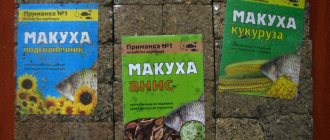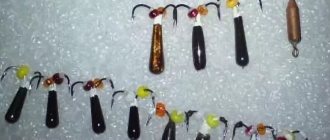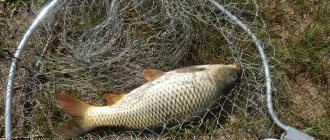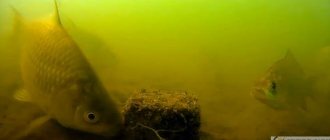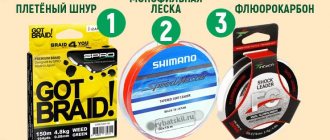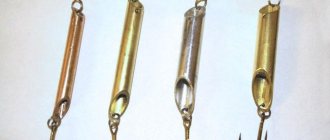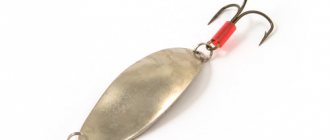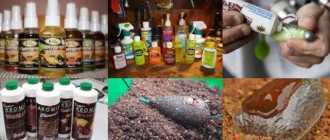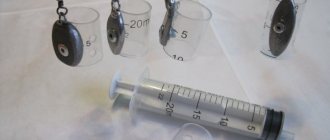Features and advantages of makukha
Features include ease of preparation:
- Makukha is prepared without special equipment or knowledge.
- Using a press you can produce a high-quality product. It is also permissible to use a regular jack, which is used to compress the dust into briquettes.
- There is a special board for rolling out boilies, which facilitates the manufacturing process.
The advantages include low cost and natural ingredients.
Briquettes made independently are liked by fish, as they distinguish between natural and artificial odors, and they always prioritize natural ingredients. Therefore, it is recommended to make makukha only at home.
How to make your own cake
Any fisherman can easily prepare excellent bait at home. In order to do this, you should prepare some products and equipment.
These include:
- Coffee grinder or meat grinder.
- Seeds.
- Abdominal weight.
First of all, you need to deal with sunflower seeds. If they were purchased raw, they should be fried a little.
Important! You should not fry the seeds too much, because they will have a burning smell rather than an oil aroma.
After this, you will need to finely grind the seeds by passing them through a meat grinder or using a coffee grinder. By the way, a blender is also suitable for these purposes. Next, you should take a special weight, place it on the ground seeds and put it in the oven so that it all hardens.
To steam the cake bait, pour two cups of seeds into a bag and add one cup of boiling water. This mixture should stand in a warm place until the morning.
It must be remembered that cake is not only bait for fish, but also for moths. Therefore, it should be stored in a tightly closed container in a distant closet. Such a delicacy cannot last long. In a warm place, the oil contained in the seeds begins to deteriorate and become bitter, which affects not only the taste of the product, but also its smell. Therefore, if the meal is stored for more than three months, then you should definitely smell it before you go fishing.
Makuha as bait and groundbait
When using makukha as bait, the hook is hidden in a briquette and thrown into the water. This type of fishing rod is called a makushatnik. The aroma of the top attracts fish, and as soon as the fish notices it, it swallows the bait along with the hook.
Victoria Leshchenko
I've been working hard in the fishing tackle department for the past six years. I can help you assemble almost any gear.
Ask a Question
Before fishing with a briquette, makha is used to feed the intended fishing spot. The fish, having fed in this place, will not be afraid of the briquette, but will calmly come up and try.
Fishing process
Possessing a rather strong aroma, the top is quite a tasty morsel for many large fish. The process can be roughly divided into certain stages: 1. Having smelled the bait, the fish swims up to the fragrant bait and begins to carefully taste it. At this time you can see the rod shaking a little.2.
As soon as the fish swallows one or two hooks, you should strike carefully so as not to give it a chance to slip off the hook.3. Then you need to very carefully begin to fish out your prey in such a way as not to make too sudden and hasty movements. When retrieving a big fish, you will need a landing net at the end.
About
Do-it-yourself makukha
Prepare makukha for fishing with your own hands at home. There are several recipes for preparing bait; they differ only in the ability to use certain equipment.
Pea flour
Pea powder is the main bait for catching carp. To prepare it you will need:
- 100 g peas.
- 50 g semolina porridge.
- Raw chicken egg.
- Corn oil.
- Honey.
Preparation:
- It is necessary to grind the peas in a blender.
- Add semolina and mix.
- In another bowl, add the egg and 1 tbsp. l. corn oil and honey.
- Later, transfer everything into one bowl and mix until smooth.
- Roll boilies from this dough to the required size and boil them in salted water. After the boilies float up, wait another minute.
- Next you should dry the boilies.
Before using it for fishing, you need to add butter to the boilie bag. Carp will love this scent.
Recipe from "Mikhalych"
To prepare you will need the following:
- Jack.
- Glass with piston.
- Metal plate.
Ingredients:
- Sunflower seeds - 30%.
- Bird food - 30%.
- Peas - 15%.
- Crackers - 15%.
- Nuts - 10%.
- Some popcorn.
Preparation:
- Grind all ingredients in a blender.
- Pour them into a glass and press down with a piston.
- Place a metal strip on top and clamp it with a jack.
- Pump the jack up to strength and leave for 4 hours.
- Place the finished briquettes in the air and dry for about a week.
Preparing a briquette is a labor-intensive process that takes 3-4 hours. When pressed with a jack, very hard briquettes are obtained that take longer to dissolve in water.

Seed dust
Cooking method:
- Sunflower seeds are lightly toasted.
- Then they need to be crushed with a knife, blender, mortar or any convenient method.
- Metal molds are filled with crushed seeds.
- Using a masher or a press, you need to press the resulting porridge into the mold as hard as possible.
- During all manipulations, the mold should be heated.
- You should not immediately remove the porridge from the mold, otherwise it will begin to disintegrate. It's worth waiting for it to cool down.
- Cooking takes about 1 hour.
- After cooking, makukha should be stored in jars with pressed oil.
Cooking features:
- The molds must have removable bottoms to easily remove the briquettes.
- It is not recommended to prepare briquettes long before use, otherwise they will lose their natural smell.
- Makukha should be stored in jars with the lid closed.
- The oil that remains after cooking is perfect for bait.
How to apply or use makukha?
The cake is used in the following cases:
- for baiting fish;
- for bait in its pure form and as the basis of bait mixtures;
- as a filler for technoplankton;
- as the main bait.
Attachment is carried out in advance a few days before fishing. Fishing feed - added directly during fishing. You need to use it correctly. It is scattered in the fishing area or thrown in the form of balls into the bait area. Dough-like bait is stuffed into feeders or springs on the bottom tackle.
Ready-made briquettes and sawed-off bars for bottom tackle - makushanka, makushatnik or pulp bait - are used as bait. A briquette, rectangular (width from 3 to 6 cm, thickness 3 cm and length from 3 to 6 cm), square or round, is firmly secured with a thread or a thick rubber band on a flat lead weight. Holes are made in the corners or on the edges of the bar with an awl, and hooks are driven into them with force. The number of hooks is from 2 to 8 pieces. The bait can remain in stagnant water for a long time, the disintegrated top remains in place, and when a fish comes up to feast on it, it will swallow the hooks. During the current, the bait is changed every 4 hours.
Leashes (preferably thread or braided) and hooks should be well covered and not interfere with the fish. Any touch of the sensitive part of the fish to a thread, fishing line or metal will scare it away.
The use of small bars or balls of makukha, on a hair mount, occurs in the same way as boilies. In still water and during currents, this bait is changed every 3-4 hours.
The cake is used as a basis for the production of technoplankton briquettes. Compressed briquettes consisting of several ingredients are used to attract fish.
How it works?
Makuha dissolves in water starting from half an hour. On average, the process of decomposition of a factory briquette takes place within 4 hours. Depending on the density of the handmade bars, the time can either decrease or increase.
During dissolution and decay, the cake creates a cloud of turbidity that is very attractive to fish, to which it hurries from afar. When feeding, hungry fish suck in the hooks along with the food. Foreign objects are usually removed through the gills. Therefore, there are often cases of several hooks getting into the fish’s mouth at once and being caught by the gill covers. Usually, having sensed a foreign object, the fish tries to immediately get rid of it and is detected. Notching also occurs when a fish feeding almost vertically takes a horizontal position.
Reviews from fishermen say that the best catches happen at night, when there are no small fish.
Top fishing technique
The fish smells the smell of the top from a great distance. But for greater efficiency, the fishing site is pre-fed. Various grains are added to complementary foods: corn, millet and peas. By combining fluff and bait, keeping the fish in one place will not be a problem.
The makushatnik is thrown into the water only after careful preparation of the gear. 3 hours after casting, the topcoat should be replaced due to its complete dissolution. The fish, sensing the smell of the top in the water, swims up to the top and begins to taste it. Carp sucks in food without disassembling it, and only after it enters the mouth does it sift out inedible objects. It is at this moment that he can suck in the hook, and after spitting it out, it will catch on the lip.
Victoria Leshchenko
I've been working hard in the fishing tackle department for the past six years. I can help you assemble almost any gear.
Ask a Question
When playing, you should kill the fish, since it is much easier to get tired ones. It is necessary to have a landing net when fishing, since when a large specimen is bitten, pulling it ashore is a labor-intensive task.
What kind of fish can you catch with cake?
The main goal of catching fish is not small fish, but large fish. That’s why you can often find carp fishermen and fishermen among fans of cake fishing who prefer searching for large carp. But the capabilities of the makukha are not limited to these two breeds. If you do not disdain medium-sized fish, then you can safely catch the same crucian carp and large bream using cake. By the way, bream, silver carp and carp also bite this bait very well. It has been tested more than once throughout the country, in a variety of conditions.
Read! Harvesting and storing worms in winter
Preparing gear
Equipment for fishing for makukha should be prepared in advance, but you can also do this directly while fishing. There are a large number of varieties of these gears, but among them there is one that is simpler and more effective.
Materials:
- Sinker. When fishing for topwater, you should use dovetail and horseshoe sinkers. It is necessary to choose the correct weight: for a reservoir without a current 50-80 g, with a current 90-160 g.
- Fishing line or cord. The recommended diameter of the fishing line is 0.3 mm, and the diameter of the cord is 0.2 mm.
- Hook. The hook size is selected according to the type of fish living in the reservoir; the recommended size is No. 4 and No. 6.
- Leash. It is recommended to use a cord of small diameter - 0.2 mm; when using a metal leash, peaceful fish may be scared.
- Top clasp. Sold in a fishing store. It is recommended to take a couple of pieces at a time when fishing. The mechanism is a loop that holds the sinker and top together. Leashes with hooks are tied to the wide end, and fishing line is attached to the narrow end.
Manufacturing:
You will need a piece of fishing line or cord measuring 30 cm, which must be threaded through the hole on the sinker from the narrow side to the wide side, then tie 2 knots at the end of the fishing line or cord. The main line should be tied to the fastener on the narrow side. The leash has hooks attached to both sides, and the leash is bent in the middle and tied to the clasp using a loop.
You should make a hole in the bars with a diameter of 4 mm and pass the fishing line through it and the load. Insert the fishing line into the narrow end and tie it to the clasp, then thread it through the hole. Next, you should make small indentations in the crown for the hooks, since they become dull when placing a dense crown.
Varieties of cake
In addition to fishing stores that sell sawn cake of unclear freshness and strength, even today on the market you can find large circles or squares of this bait, sold as livestock feed. This is where you can get aromatic and fresh cake.
In addition, modern fishermen are offered to purchase hemp cake, and even less often flaxseed. True, such luxury has recently been available only in specialized fishing stores.
As a result of the artisanal production of cake, it also ends up on store shelves with the addition of corn, peas, anise, etc.
What is cake
Of course, you can immediately start with how to catch fish using a makushatnik.
However, this does not make sense, because not every fisherman knows what it is and how to cook it. The presented “fish delicacy” is made from the seeds of various oilseeds. During the pressing process, they undergo the necessary processing using pressing. Meal consists of:
- Water (its maximum amount cannot exceed 11%).
- Oils (the maximum the product may contain is 9.4%).
- Protein (it can be 30-40% in different types).
- Fiber (maximum 5% in a product).
Additional recommendations from experienced fishermen
Experienced fishermen note several recommendations when using this bait:
- When making briquettes in a mold, you should choose a mold with a removable bottom in order to squeeze out the briquette using a press.
- You should not make briquettes long before fishing; the smell quickly disappears and the bait becomes useless.
- Bait should be stored in tightly closed jars.
- Do not discard the remaining oil, but use it along with complementary foods.
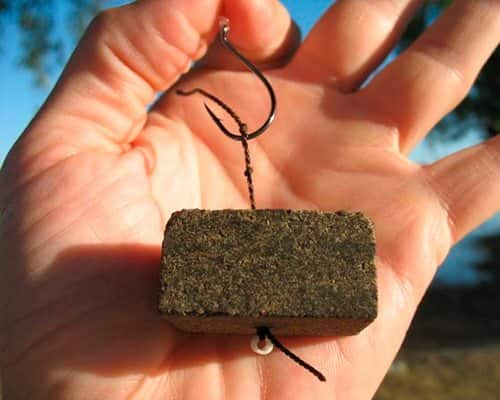
https://www.youtube.com/watch{q}v=QArwHnqjrqM
Preparing makukha is not difficult; it does not require any expensive ingredients. Fishing with makukha always shows stable results and high efficiency as bait and groundbait.
Bait for spring
In spring, crucian carp begins to feed and is actively gaining strength for the upcoming spawning. The following recipe works best at this time:
- Molehill soil: 5 parts
- Base mix: 5 parts
- Ground sunflower seeds: 1 part
- Chopped worm: 0.5 parts
- Pressed bloodworm: 0.1 part (depending on the number of resulting balls)
The preparation will be as follows: first, mix the earth and the base mixture. Then you need to cut and crush the worms; this is convenient to do with any stick found on the shore. Add crushed worms, mix and dilute the bait with water.
While the bait is infusing, crush the bloodworms in a separate jar (preferably glass) and put it aside.
When the bait is infused, you need to form dense balls, the size of an orange, from half the mixture, and put a little crushed bloodworm in the middle. These balls will sink into the silt, and will force the crucian carp to scour in search of bloodworms.
We divide the second half of the bait into two parts, from one we make loose balls that will break on the water (we do not add bloodworms), we leave the second half for additional feeding.
If there is a lot of silt in the reservoir, you can also add 1 part of bran to the mixture, they will float even through the silt and carry out the aroma of the bait.
Scent selection
Sunflower cake has a smell that is attractive to pike perch, carp, bream and other fish. However, sometimes the natural smell of sunflower is not enough for a decent bite. In these cases, aromatic additives come to the rescue.
Despite the fact that the additives have aromas that are atypical for natural conditions, they have proven their effectiveness in practice. Fragrances can be designed for a specific time of year or be universal.
Summer smells:
- honey - an additive intended for warm water, added to porridges or grains when steaming;
- strawberry (or raspberry) - a typical aroma for the summer season;
- plum aroma, which is often combined with nutmeg or strawberry;
- tutti-frutti - often used as the main ingredient when fishing for carp.
Cold water scents:
- garlic flavor used in autumn or spring;
- chocolate - especially effective in closed reservoirs;
- anise smell;
- the aroma of dill is attractive to crucian carp, as well as bream and carp;
- hemp scent is very effective, but it’s not always possible to find such a spray;
- cheese smell.
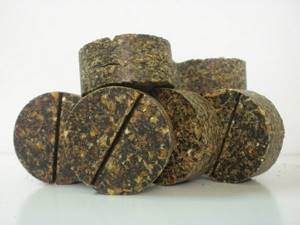
Universal scents:
- original sunflower scent;
- vanilla - attracts crucian carp, carp, ram, roach, bream;
- corn is one of the most common scents for carp fishing (soy or corn-soy scents are also used).
We suggest you familiarize yourself with: Baits for catching silver bream and white bream on a fishing rod
Selection of promising places for fishing with a "makushat"
Seasonality of fishing
You can use such tackle for catching carp at any time of the year, except winter. They begin hunting for it in early spring, when the water begins to warm up to +10-15°C. It is under such conditions that the carp begins to search for food, leaving its wintering pits. From this moment on, the carp begins to be interested in makukha.
The carp begins to actively peck at the beginning of June and continues its activity in August and September. During warm periods it actively seeks food for itself, but on hot days it is active early in the morning and late in the evening. After the water temperature drops below +12°C, fishing for carp ends.
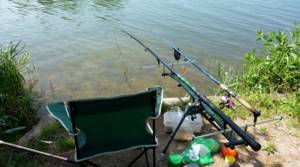
Search for a promising location
In the summer, when the water is well warmed up, the carp walks along its paths in search of food. There may be shallow water or thickets of aquatic vegetation along its route, but the carp loves silence. During the daytime, carp can be at depth or in snags. If the reservoir is unknown, then you can use an echo sounder or a marker float to study the bottom topography. Promising places will be the edges, as well as the descents to the pits. Effective places may be the boundaries of clean water and aquatic vegetation, but the carp feels more secure when it is at depth.
Tips and tricks
In order for your equipment to bring you the maximum catch, you should pay attention to the following nuances: 1. To prepare gear from cake, it is best to choose plates that are made of lead as a load.2. When choosing a place for fishing, it is best to look for reservoirs where there are no thickets and grass at the bottom, and where there are reeds nearby.3.
When choosing maki, you should give preference only to fresh cake seeds so that the bait turns out to be of the highest quality.4. Before you start fishing on the top, you should feed the animals with large grains, such as peas or corn.5. You can also use a worm bait on the resulting cake.
Source
Kinds
There are several types of this product:
Sunflower
As mentioned above, this variety is the most common and is most often used for fishing. It has a pleasant smell and taste, which are necessary indicators for high-quality equipment.
Linen
The demand for this type is somewhat lower due to its relatively high price in relation to sunflower cake. Also, the cooking process requires special technologies and rules, non-compliance with which can negatively affect the quality of the product.
Soy
Quite rarely used both in agriculture and as fish bait. If produced incorrectly, there is a risk of the formation of harmful substances that make such cake unsuitable for use. The advantages include high protein content, which has a positive effect on the biological value of the product.
There are also several other types of makukha, which are practically not used in the fishing industry. These include: mustard, peanut, rapeseed and corn cake.
Fishing cake has proven itself to be an appetizing bait for different types of fish. The main feature of this method is its use for catching large baitfish. Slowly dissolving in water, the cake creates a fragrant cloud, thereby attracting prey to its networks.
